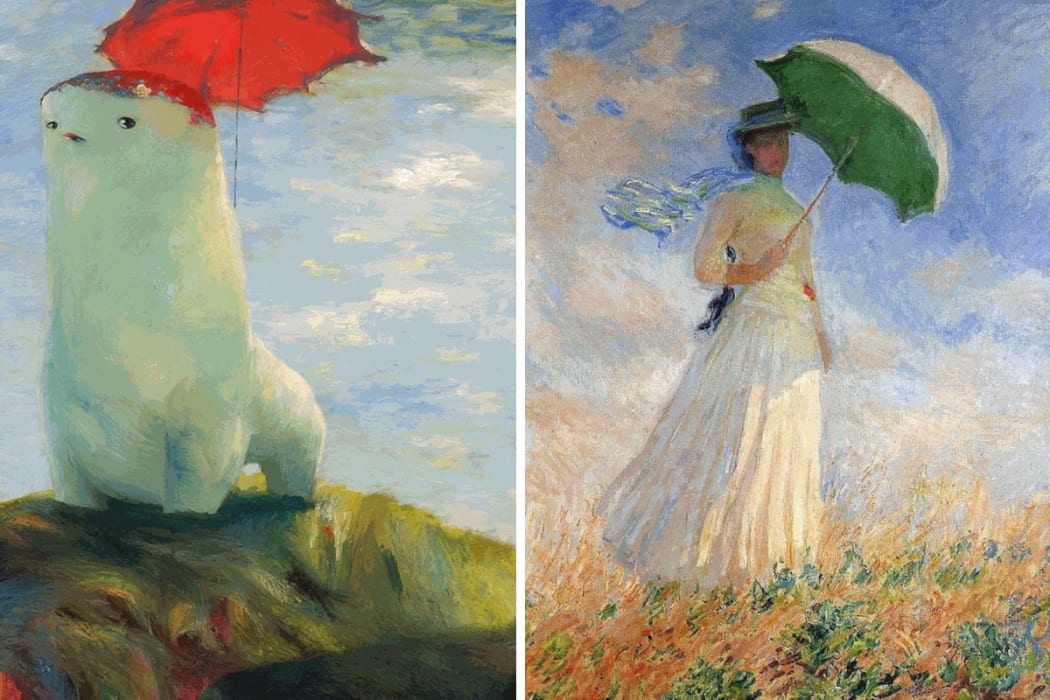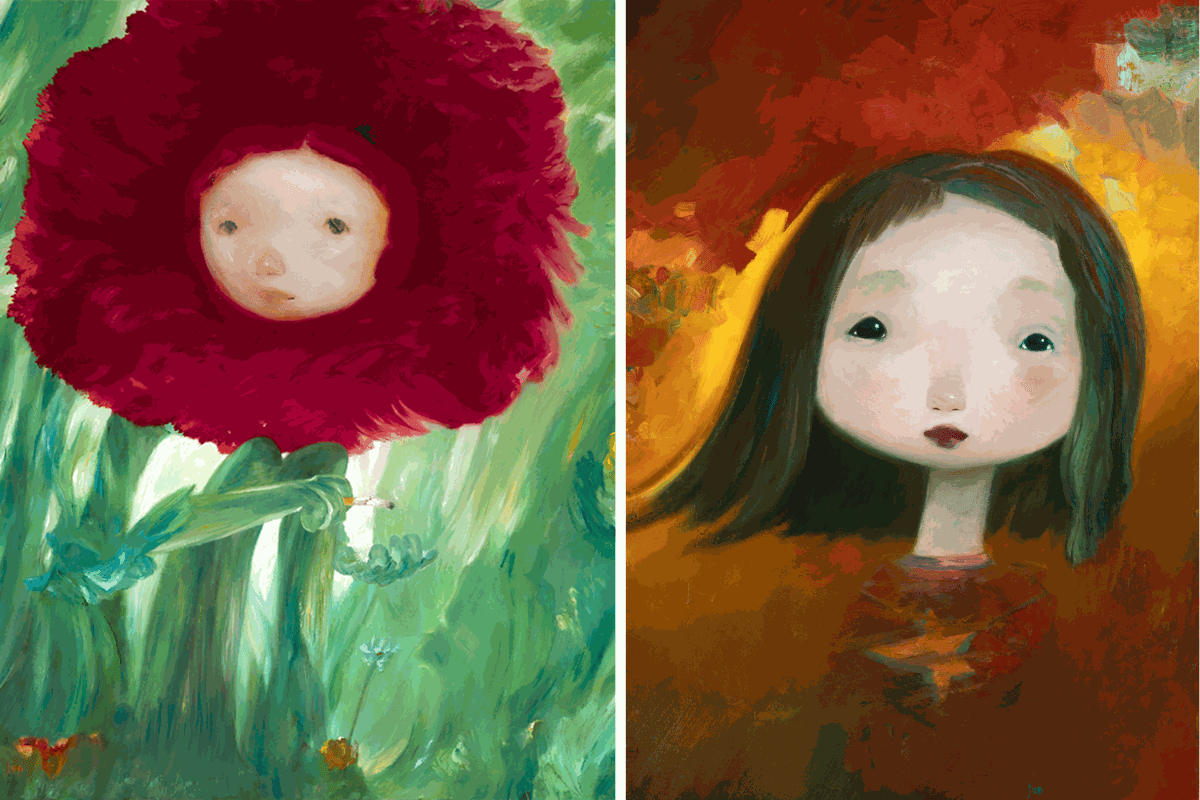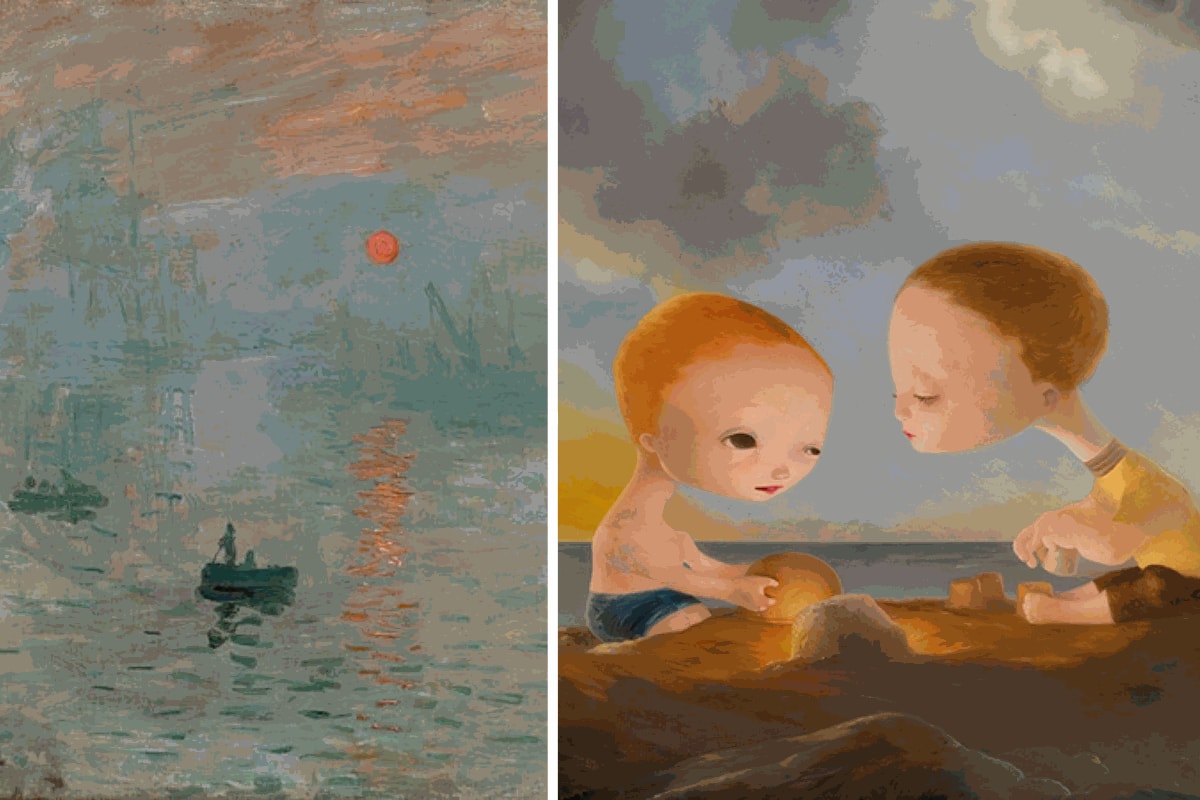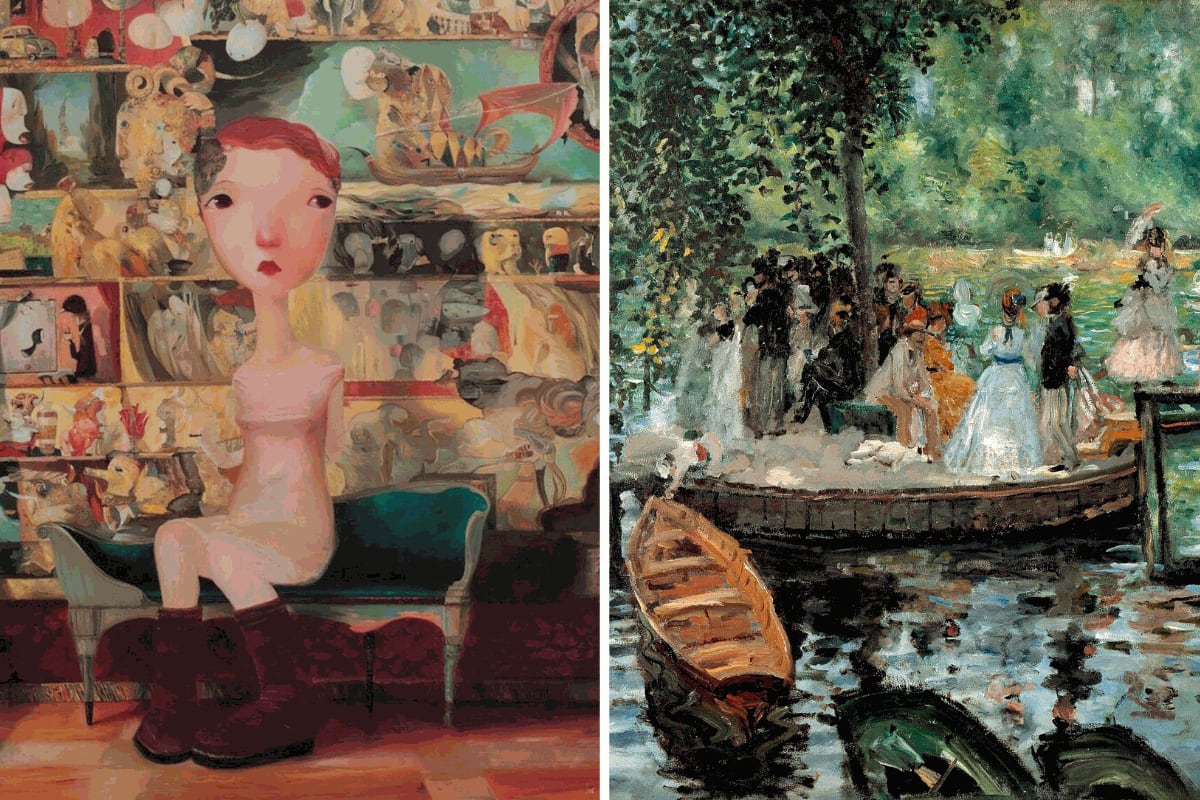
Joe Sorren, one of the most exceptional contemporary artists on an international level, who has enchanted and moved collectors worldwide, is now about to make a comeback with his new solo show titled "Between the Wrinkles," at the Dorothy Circus Gallery in London.
But who is Joe Sorren, and what makes his work absolutely unique?
But who is Joe Sorren, and what makes his work absolutely unique?

A GLIMPSE INTO JOE SORREN HISTORY
Joe Sorren is an American artist born in Chicago in 1970 and raised in Flagstaff, Arizona.
Sorren began painting around 1989, following his first artistic encounter at the Art Institute of Chicago, where he was deeply inspired by Georges Seurat's "A Sunday Afternoon on the Island of La Grande Jatte".
He then pursued the study of art and earned a Bachelor of Fine Arts degree from Northern Arizona University in 1993 before starting to work as a creative director for Transworld Snowboarding magazine.
Sorren began painting around 1989, following his first artistic encounter at the Art Institute of Chicago, where he was deeply inspired by Georges Seurat's "A Sunday Afternoon on the Island of La Grande Jatte".
He then pursued the study of art and earned a Bachelor of Fine Arts degree from Northern Arizona University in 1993 before starting to work as a creative director for Transworld Snowboarding magazine.
He held his first solo exhibition in 1995 and won the gold medal at the Society of Illustrators competition in New York in 1997, a significant global recognition.
After an extended stay in New York, Joe Sorren spent several years in Florence and Barcelona, assimilating both Italian and Spanish artistic influences.
His artworks have been featured in three monographic books and prestigious publications, including The New Yorker, Time, and Rolling Stone. He has also collaborated with Warner Bros, Fox, and NBC.
After an extended stay in New York, Joe Sorren spent several years in Florence and Barcelona, assimilating both Italian and Spanish artistic influences.
His artworks have been featured in three monographic books and prestigious publications, including The New Yorker, Time, and Rolling Stone. He has also collaborated with Warner Bros, Fox, and NBC.
Sorren has exhibited his works in solo shows at numerous galleries and museums in the United States and internationally.
In 2010, Joe Sorren not only had his first retrospective but was also featured in exhibitions such as "Art from the New World" at the Bristol City Museum and "Pop Surrealism" at the Museum of Visual Arts of Palazzo Collicola in Spoleto, Italy, curated by Dorothy Circus Gallery during the "Festival dei Due Mondi".
In 2010, Joe Sorren not only had his first retrospective but was also featured in exhibitions such as "Art from the New World" at the Bristol City Museum and "Pop Surrealism" at the Museum of Visual Arts of Palazzo Collicola in Spoleto, Italy, curated by Dorothy Circus Gallery during the "Festival dei Due Mondi".
THE POETICS OF AN ARTIST WHO DEFIES CATEGORIZATION

As anticipated, Joe Sorren was one of the pioneers of the Pop Surrealism movement, a variation of surrealism influenced by popular culture in the 1960s and '70s.
However, Sorren immediately interpreted this return to painting as an invitation to express himself freely in an expressionistic manner, making his painting a unique means to convey poetry through art. To this day, Sorren's painting does not belong to any movement and escapes any schema, remaining free and unique. Joe Sorren's works blend together the fluid rhythm of impressionism and the fantasy of surrealism in a painterly declination where matter contrasts with the artist's vision and tends towards abstraction.
The art of Joe Sorren embodies the extraordinary imagination of a pure artist and manifests the unfiltered sensitivity of someone who has nothing to prove. Sorren has become internationally famous for his unique style and the representation of cartoon-inspired characters interacting in magical and dreamlike settings. Thanks to the poetry of his images, his characteristic blurred landscapes reminiscent of the masters of impressionism, and his distinctive brushstrokes, Sorren soon becomes one of the predominant figures in the American cultural avant-garde scene.
However, Sorren immediately interpreted this return to painting as an invitation to express himself freely in an expressionistic manner, making his painting a unique means to convey poetry through art. To this day, Sorren's painting does not belong to any movement and escapes any schema, remaining free and unique. Joe Sorren's works blend together the fluid rhythm of impressionism and the fantasy of surrealism in a painterly declination where matter contrasts with the artist's vision and tends towards abstraction.
The art of Joe Sorren embodies the extraordinary imagination of a pure artist and manifests the unfiltered sensitivity of someone who has nothing to prove. Sorren has become internationally famous for his unique style and the representation of cartoon-inspired characters interacting in magical and dreamlike settings. Thanks to the poetry of his images, his characteristic blurred landscapes reminiscent of the masters of impressionism, and his distinctive brushstrokes, Sorren soon becomes one of the predominant figures in the American cultural avant-garde scene.

A contemporary master of "emotion lighting," Joe Sorren paints in oil on large canvases with a technique characterised by a soft effect achieved through skillful use of colour, capable of returning to our gaze the vision of the golden light of the sun as it plunges into the clouds of a summer storm.
His art has been strongly influenced by the early impressionist painters, particularly in the choice of evocative color palettes and dense brushstrokes that merge into an incredible rendering of the contrast between light and shadow, often a protagonist of his paintings.
Sorren not only captures the rays of the sun as a colour but also bends them to the meaning of his emotions, orchestrating a symphony of shades, filling the canvas with a strong sense of regeneration and transformation, and generating a vision where each brushstroke resonates with the pure and uncontaminated sound of happiness.
Sorren not only captures the rays of the sun as a colour but also bends them to the meaning of his emotions, orchestrating a symphony of shades, filling the canvas with a strong sense of regeneration and transformation, and generating a vision where each brushstroke resonates with the pure and uncontaminated sound of happiness.
Sorren's great mastery lies precisely in evoking deep feelings and originating images capable of overwhelming us, leaving an indelible mark on all those who have the privilege of experiencing his work firsthand.
His evocative paintings reflect his personal life experiences, a deep lived experience that reflects the story of his life seen through the magical lens of a fervent imagination, and his sweetest desires.
As the artist has stated, he draws inspiration not only from human behaviour but also from the simplest and most everyday things and places, like a simple grocery store or small shiny objects he finds on the ground.
His evocative paintings reflect his personal life experiences, a deep lived experience that reflects the story of his life seen through the magical lens of a fervent imagination, and his sweetest desires.
As the artist has stated, he draws inspiration not only from human behaviour but also from the simplest and most everyday things and places, like a simple grocery store or small shiny objects he finds on the ground.
From his impressionistic brushstrokes, mysterious creatures come to life, caught in their inaccessible ocean and immersed in a state that is both melancholic and joyful.
His surreally expressive characters silently explore the wonders of nature and the human spirit. And inexplicably, we identify with them even in the absence of precise forms, perhaps because of their characteristic of appearing vulnerable and strong at the same time.
His surreally expressive characters silently explore the wonders of nature and the human spirit. And inexplicably, we identify with them even in the absence of precise forms, perhaps because of their characteristic of appearing vulnerable and strong at the same time.
JOE SORREN AND THE CREATIVE PROCESS
Of great fascination is his personal creative process, in which the artist allows his works to change naturally and unconsciously.
In his works, layers of paint are added one after the other, allowing a figure to spontaneously transform into a hill immersed in a landscape or a tree to become a human creature. Sometimes a landscape can become a parasol, or a toaster can transform into a turntable.
The artist, in an interview with Alexandra Mazzanti for Dorothy Circus Gallery, stated: “My approach to art? I don’t work with sketches; I just put the canvas up and try to create a history on the canvas. I just put the paint on, add more paint, and more, until things start to evolve and things start to show up —what initially looks like a shovel may transform into a grizzly bear, or something else. I try not to just come up with an idea and render it.
I more try to have a conversation with the canvas. Because in the end, what is the painting? A painting is a two-dimensional recording, of three-dimensional movement and space.
So that the energy that brushstrokes inform the viewer just as much as the actual image that you are trying to portray It allows you to create moments that can surprise yourself and its kind of the all-goal if you can keep yourself engaged and Discovering rather than Rendering."
In his works, layers of paint are added one after the other, allowing a figure to spontaneously transform into a hill immersed in a landscape or a tree to become a human creature. Sometimes a landscape can become a parasol, or a toaster can transform into a turntable.
The artist, in an interview with Alexandra Mazzanti for Dorothy Circus Gallery, stated: “My approach to art? I don’t work with sketches; I just put the canvas up and try to create a history on the canvas. I just put the paint on, add more paint, and more, until things start to evolve and things start to show up —what initially looks like a shovel may transform into a grizzly bear, or something else. I try not to just come up with an idea and render it.
I more try to have a conversation with the canvas. Because in the end, what is the painting? A painting is a two-dimensional recording, of three-dimensional movement and space.
So that the energy that brushstrokes inform the viewer just as much as the actual image that you are trying to portray It allows you to create moments that can surprise yourself and its kind of the all-goal if you can keep yourself engaged and Discovering rather than Rendering."

The narrative of his paintings is always free and fluid, layering and evolving. At its core lies the artist's trust in his ability to remember and interpret life but also to let it speak through the colours that belong to it without neglecting those simple and unique details that make it true.
In this way, all of Joe Sorren's works acquire a character not only of spontaneity but also of vulnerability and honesty. These characteristics make his work stand out in a particular way.
Quoting Jude Bergeron about Joe Sorren:“You know that every inch of the surface has been carefully considered while it still maintains that childhood carelessness of a crayon drawing. The dichotomy is astonish."
In this way, all of Joe Sorren's works acquire a character not only of spontaneity but also of vulnerability and honesty. These characteristics make his work stand out in a particular way.
Quoting Jude Bergeron about Joe Sorren:“You know that every inch of the surface has been carefully considered while it still maintains that childhood carelessness of a crayon drawing. The dichotomy is astonish."
Equally intriguing, alongside Sorren's creative process, which revolves around the "search for the soul of the work" and does not involve preparatory sketches, is the final process of this artistic creation. Indeed, to understand if the work is finished, the artist distances himself from it, almost pretending to be a casual observer. It is only after this detachment that he can understand if the work is complete or if more work is needed.
MAGICAL WORLDS, MAGICAL CREATURES
Constantly experimenting with new forms and palettes, Sorren highlights the affectionate faces and gestures of his creatures, bringing to life the fables that we are invited to experience with our own eyes. Sorren's emotional subjects are deeply moving and capable of transporting us into the timeless and memorable serenity of childhood.

Songwriter Ingrid Ellen Michaelson, speaking about Joe Sorren, has stated: “It seems to me that Joe makes friends. Or at least makes things he wants to hang around with and observe. Almost all, if not all, of the creatures he creates have a sweet humanness about them.Even the grotesque ones have some sort of kindness in their eyes. Or maybe sadness. But sadness is so human. Joe paints a face and it is the sort of face that you want to touch with your fingers. It is the sort of face that you desperately want to comfort or confide in. It is the sort of face that you have known all of your life. He brings another word to you, a little world that you want to crawl into and roll around in. It is a blurry fuzzy, dreamy alternate reality where everything is a possibility and cupcakes are an acceptable dinner.”
TO RETURN TO PAINTING IS TO RETURN HOME
Joe Sorren, after years of great international success, took a break from painting, a time filled with experiences of travel, love, and loss. Today, we find the echoes of these experiences in the wrinkles that have marked the face of an artist with tangible expressive maturity.
In an interview with Dorothy Circus, the artist stated: “While I was traveling around these past years, meeting such wonderful people and those experiences; I found that my scope for narrative has grown; finding these subtle moments worth exploring everywhere I seem to look.”
In an interview with Dorothy Circus, the artist stated: “While I was traveling around these past years, meeting such wonderful people and those experiences; I found that my scope for narrative has grown; finding these subtle moments worth exploring everywhere I seem to look.”

Joe Sorren's art has thus undergone an evolution that reflects his experience and maturity. Compared to his previous works, his current pieces explore a wider range of themes and emotions, capturing the subtle details of everyday life and transforming them into engaging visual narratives.
In particular, his latest series of works has centred on the theme of returning home and the idea of creating a world worth coming back to.
In particular, his latest series of works has centred on the theme of returning home and the idea of creating a world worth coming back to.
LOOKING UP TO THE GREATS TO BECOME GREAT

Joe Sorren has been influenced by several great artists and draws inspiration from them.
His models include the grand masters such as Sargeant, Degas, Rockwell, and especially Van Gogh. In his works, we can find not only a dominant use of the colour yellow but also textured brushstrokes, reminiscent of the works of Vincent Van Gogh.
However, the moment that sparked Sorren's painting career, as mentioned earlier, was his visit to the Art Institute of Chicago, where he encountered Georges Seurat's "A Sunday Afternoon on the Island of La Grande Jatte".
His models include the grand masters such as Sargeant, Degas, Rockwell, and especially Van Gogh. In his works, we can find not only a dominant use of the colour yellow but also textured brushstrokes, reminiscent of the works of Vincent Van Gogh.
However, the moment that sparked Sorren's painting career, as mentioned earlier, was his visit to the Art Institute of Chicago, where he encountered Georges Seurat's "A Sunday Afternoon on the Island of La Grande Jatte".

In the swift brushstrokes and use of light, we can find a reference to Impressionism, while in Sorren's dreamlike atmosphere and certain compositions, we can find the symbolism of the greatest exponent of the movement bearing this name: Odilon Redon.
For Redon (1840–1916), undoubtedly the most important representative of symbolic painting, the true dimension of art was the dream, which allowed the artist to explore a fantastic inner world.
Redon filtered reality, as Sorren does today, through memory and imagination, giving his compositions an evocative significance that goes beyond the external appearance.
For Redon (1840–1916), undoubtedly the most important representative of symbolic painting, the true dimension of art was the dream, which allowed the artist to explore a fantastic inner world.
Redon filtered reality, as Sorren does today, through memory and imagination, giving his compositions an evocative significance that goes beyond the external appearance.
Redon wrote, "I have created art according to my own opinion, with eyes open to the wonders of the visible world [...]. It is nature that imposes on us to obey the gifts it has given us. Mine led me to dream. I suffered the torments of imagination and the surprises it gave beneath the pencil, but I have guided and led these surprises according to the organic laws of art that I know and feel, with the sole purpose of obtaining in the viewer, through sudden fascination, every possible recall of the uncertain and every evocation, at the boundaries of thought."

He wanted to "make unbelievable beings live humanly according to the laws of the believable, putting, as far as possible, the logic of the visible at the service of the invisible."
And this is what we also find in Sorren: fantastic creatures, dreamy landscapes, colours that convey happiness and love for life, but at the same time atmospheres that can instill fear and mystery.
And this is what we also find in Sorren: fantastic creatures, dreamy landscapes, colours that convey happiness and love for life, but at the same time atmospheres that can instill fear and mystery.
Even the palettes of some works are similar, such as those of "My Other Boat is a Boat" and "Butterflies" or "Baronne de Domecy" and "Anthologia".
Moreover, these last two works have almost the same composition. A woman in three-quarters view, set against a blue and green background, gazes at something that the viewer cannot see. The entire composition surrounding her probably aims to evoke the vivid inner world of the two women.
Moreover, these last two works have almost the same composition. A woman in three-quarters view, set against a blue and green background, gazes at something that the viewer cannot see. The entire composition surrounding her probably aims to evoke the vivid inner world of the two women.

THE PICTURE WITHIN THE PICTURE: FROM MANET TO JOE SORREN
"The Critic" by Joe Sorren focuses on the complex interaction between the artwork and the observer.
This extraordinary painting gives us the sensation of connection that we can experience with another person, transcending physical encounters, much like a breeze that allows us to access the artist's emotions through their work.
The subject is depicted in writing, reclined on a boulder overlooking the tranquil expanse of a dense sea, rich with shades of green and blue extending to the horizon.
Around her, gentle waves break and recede, amplifying the atmosphere of quiet contemplation.
This extraordinary painting gives us the sensation of connection that we can experience with another person, transcending physical encounters, much like a breeze that allows us to access the artist's emotions through their work.
The subject is depicted in writing, reclined on a boulder overlooking the tranquil expanse of a dense sea, rich with shades of green and blue extending to the horizon.
Around her, gentle waves break and recede, amplifying the atmosphere of quiet contemplation.

It is precisely her contemplation of an imaginary work, existing solely in her mind, that creates the fascinating conceptual effect of "picture within the picture".
This layered visual experience evokes a sense of depth and complexity reminiscent of Édouard Manet's 1882 masterpiece "A Bar at the Folies-Bergère".
Next to the figure is a mysterious and enigmatic creature, whose form defies easy categorization. This enigmatic presence serves as a powerful symbol of the vast realms of imagination residing within the artist's subject. Through Sorren's skillful brushstroke and evocative imagery, "The Critic" becomes a testament to the power of art in bridging distances between us, offering insight into the profound connections that can exist between individuals, even in the absence of a direct encounter.
This layered visual experience evokes a sense of depth and complexity reminiscent of Édouard Manet's 1882 masterpiece "A Bar at the Folies-Bergère".
Next to the figure is a mysterious and enigmatic creature, whose form defies easy categorization. This enigmatic presence serves as a powerful symbol of the vast realms of imagination residing within the artist's subject. Through Sorren's skillful brushstroke and evocative imagery, "The Critic" becomes a testament to the power of art in bridging distances between us, offering insight into the profound connections that can exist between individuals, even in the absence of a direct encounter.
The beginning of each of his works is in itself the beginning of an adventure, leading the artist, and then all of us, into unknown worlds populated by the most diverse creatures.
In the words of Donna H. Baxtwer: “Joe is partial to adventure. He enjoys swords fights with really long liquorice whips, dances a romantic lead in Argentine tango and likes to run barefoot through the hills.”
In the words of Donna H. Baxtwer: “Joe is partial to adventure. He enjoys swords fights with really long liquorice whips, dances a romantic lead in Argentine tango and likes to run barefoot through the hills.”

And we too, in front of his paintings, can do nothing but walk barefoot, exploring peaks and hills, gazing at the sunlight reflected in the water, and making friends with some of the most magical and incredible creatures. We can be carried away by the gentle breeze that caresses the nature of his landscapes, delve into the depths of the sea with mermaids with long red hair, or listen to symphonies never heard before.
What his works promise is immersion in another world, dreamlike, magical, and colourful, that our eyes and our hearts will not easily forget.
What his works promise is immersion in another world, dreamlike, magical, and colourful, that our eyes and our hearts will not easily forget.

